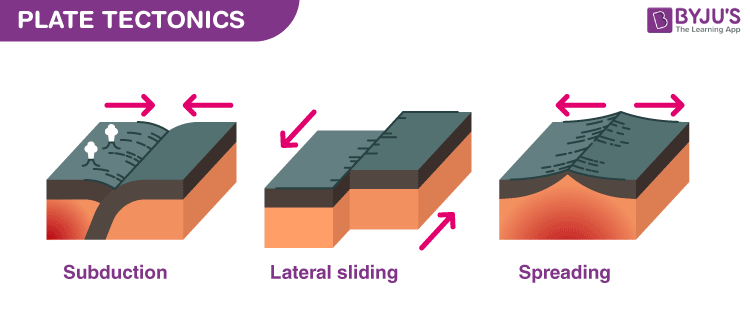What is plate tectonics?
Plate tectonics is the theory that Earth’s outer shell is divided into several plates that glide over the mantle, the rocky inner layer above the core. The plates act like hard and rigid shells compared to Earth’s mantle. This strong outer layer is called the lithosphere.

The earth’s lithosphere is composed of seven or eight major plates and many minor plates. The lithosphere is a rigid outermost shell of the earth and is broken up into tectonic plates. When these plates meet, their relative motion determines the type of boundary like convergent, divergent, or transform.
Volcanic activity, earthquakes, mountain-building, and oceanic trench formation occur along these plate boundaries. The relative movement of the plates typically ranges from zero to 100 mm annually.
How do plate tectonics affect humans?
Plate tectonics affects humans in several important ways.
- It causes earthquakes
- It causes volcanism
- It induces the recycling of elements within the biosphere and between the geosphere and biosphere
- It causes mountain-building
Types of plate boundaries:
Plate Boundaries mainly consist of three types (the fourth is a mixed type), formed in the manner the plates shift in relative to each other. These are collectively referred to as surface phenomena of different types. Plate boundaries are of different types, namely:
Transform boundaries:
These boundaries happen where two lithospheric plates move apart, or maybe further precisely, collide away from one other despite the transform faults, where plates are neither created nor destroyed.
Divergent boundaries:
These boundaries happen when both plates move apart from one another.
Convergent boundaries:
These boundaries happen when both plates move towards one other to form a zone of subduction or a continental collision.
Transform boundaries:
These boundaries happen when natural or human-made structures that cross a transform boundary are offset—split into pieces and carried in opposite directions.
Plate boundary zones:
These boundaries happen where the effects of the interactions are unclear, and the boundaries usually occur along a broad belt.
|
Related Links |
|---|

thanks a lot
Very helpful !!